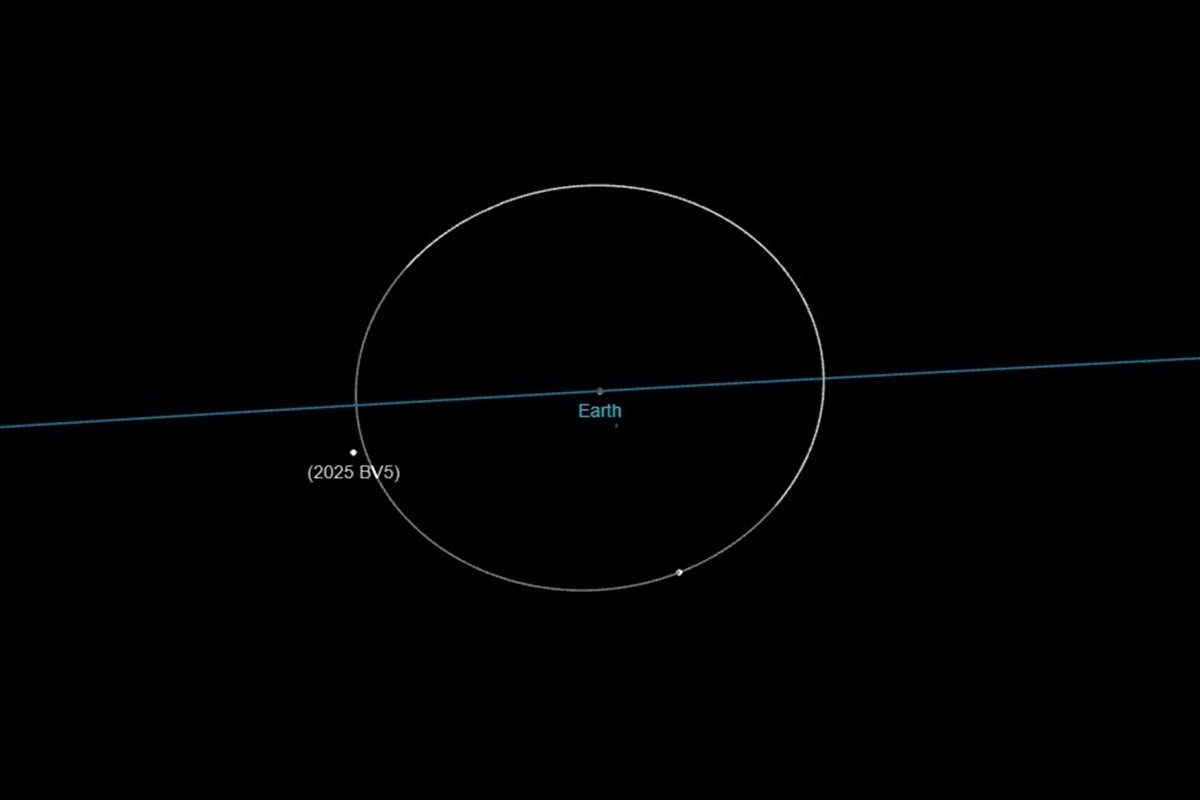-
Dodgers vs. Cardinals Highlights | MLB on FOX - 4 mins ago
-
Dallas Cowboys Coach’s Inspiring Message for Micah Parsons - 9 mins ago
-
Sean ‘Diddy’ Combs seeks mistrial over balcony incident testimony - 18 mins ago
-
First look at preparations for the 2026 FIFA World Cup - 31 mins ago
-
National Guard arrives in L.A. as fallout from raids continues - 42 mins ago
-
‘Unlawful Assembly’ Declared Amid Los Angeles ICE ProtestsâPolice - 48 mins ago
-
Michigan Panthers vs. Birmingham Stallions Highlights | United Football League - 50 mins ago
-
Miley Cyrus heckled into singing at Tribeca Festival - 59 mins ago
-
Paramount, a proud Latino suburb, thrust into center of Trump crackdown - about 1 hour ago
-
RBC Canadian Open: Full $9.8M Payout, How Much Did Ryan Fox Win? - about 1 hour ago
NASA Tracking Truck-Sized Asteroid Approaching Earth
NASA is tracking a truck-sized asteroid which is set to hurtle by Earth today at many times the velocity of a speeding bullet.
The space rockâdubbed “2025 BV5″âis estimated by NASA’s Jet Propulsion Laboratory to be some 26 feet across.
It is predicted to make its closest approach to our planet at around 14.43 ET on January 30, at a minimum distance of around 264,000 miles.
Relative to the Earth, 2025 BV5 will be moving at some 9,194 miles per hour; fortunately it is not on a collision course. It will make another pass by Earth in mid-April, and won’t cross our path again until 2031.
buradaki/iStock / Getty Images Plus
Asteroids are rocky, airless bodies left over from the formation of the solar system some 4.6 billion years ago. They are primarily found orbiting the sun, between the paths of Mars and Jupiter, in the main asteroid belt.
However, gravitational interactions (typically with Jupiter) can sometimes send asteroids flying out of the belt, potentially bringing them into the inner solar system and even near Earth.
“Scientists continuously monitor Earth-crossing asteroids, whose paths intersect Earth’s orbit, and near-Earth asteroids that approach Earth’s orbital distance to within about 28 million miles and may pose an impact danger,” NASA states on its website.
Asteroids are known to range in size from around 329 miles in diameter (i.e. Vesta, which accounts for 9 percent of the total mass of all asteroids) down to a matter of feet across, like today’s truck-scale passer-by.

NASA
While it will pass by the closest to use, 2025 BV5 is not the only asteroid metaphorically buzzing the Earth today.
A 110-feet-wide body known as “2025 BU3” is set to come within 812,000 miles of us; this is more than three times the distance to the moon.
And much further out, at its closest distance of 3,630,000 miles, will pass “2025 BJ2”, which is likely similarly sized at an estimated 130 feet across.
While these three space rocks are set to pass by without causing concern, the same cannot be said of the 196-foot asteroid “2024 YR4”, first spotted by NASA on December 25 last year.
The space agency’s Center for Near-Earth Object Studies has warned that it has around a one percent chance of hitting Earth in late 2032.
Do you have a tip on a science that Newsweek should be covering? Do you have a question about asteroids? Let us know via science@newsweek.com.
Source link


























